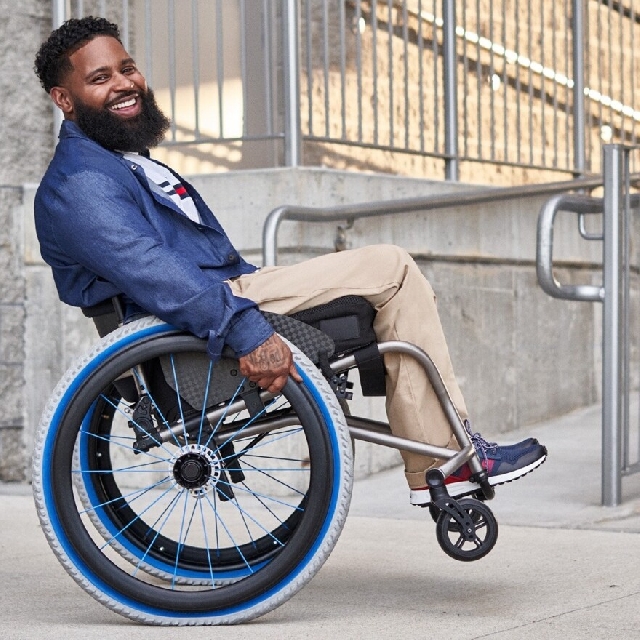The move is on
 A man with disability
A man with disability
Disability is not inability!
Do we really believe in that statement or it is just a saying?
Globally, disability is a great concern due to the exclusion of persons with disability from mainstream society and the attendant consequences of inequality in all spheres of life.
Persons with disability represent the world’s largest minority group (United Nations Enable, 2016).
They are estimated to be about 10 percent (about 650 million people) of the world’s population, and about 80 percent of all persons with disability live in developing countries (World Health Organization, 2016).
The global literacy rate for adults with disability is at three percent and that of women with disability is one percent (United Nations Enable, 2016).
In developing countries, about 90 percent of children with disability are not in school (United Nations Enable, 2016).
The world’s working age people with disability are estimated around 386 million people but the majority are unemployed (United Nations Enable, 2016). Persons with disability are likely to receive lower wage (Mitra, Posarack & Vick, 2011).
Consequently, persons with disability are estimated to be 20 percent of the world’s poorest people (United Nations Enable, 2016).
The proponents of the social model, who are persons with disability, posit that persons with disability are disabled because they are prevented from full involvement within mainstream society due to the existence of physical, organizational, transportation, architectural, and attitudinal barriers (Carson, 2009; Sullivan, 2011). This means if these barriers are broken then persons with disability can have maximum involvement within the society.
There are countless stories of persons with disability who have made it in life.
Some of the stories which I have heard personally from the Helping Hand TV Show, a credible and authentic television show in Ghana, hosted by Bishop Dr. Charles Cofie Hackman.
These are stories where some persons with disability surmounted their challenges and became successful in life.
I am looking forward to see more persons with disability have such successful experiences in life.
However, as we wait for persons with disability to overcome these challenges, we can also help in breaking down, if not all, some of the barriers for them.
This can be done by initiating a move to make sure that public buildings are accessible to persons with disability by providing disability-friendly walkways, reducing or stopping certain attitudes we show towards them like discrimination and stigmatization and let us stop believing that they are cursed and having a negative notion about their competencies.
Also, sidewalks can be provided on main roads so that they can use the roads without risking their lives. Providing them with the necessary tools and assistance at their workplaces will be very helpful.
Having access to transportation can also aid in their movements.
Employing persons with disability with the requisite skills and competencies will help promote their economic rights.
Allowing them to air their views will also help in promoting their freedom of expression.
Let us all be part of the move from a non-disability-friendly world to a more disability-friendly world and see the changing society will experience when more persons with disability live a better life.
As H4P is celebrating their 11th anniversary, we appreciate Bishop Dr. Charles Cofie Hackman, the Chief Executive Officer for initiating the move from a non-disability-friendly world to a more disability-friendly world, I hope we will all join in their efforts to promote and ensure the continuity of the other side of the well-known story because disability is not inability.
Source: Mavis Yaa Konadu Agyemang





